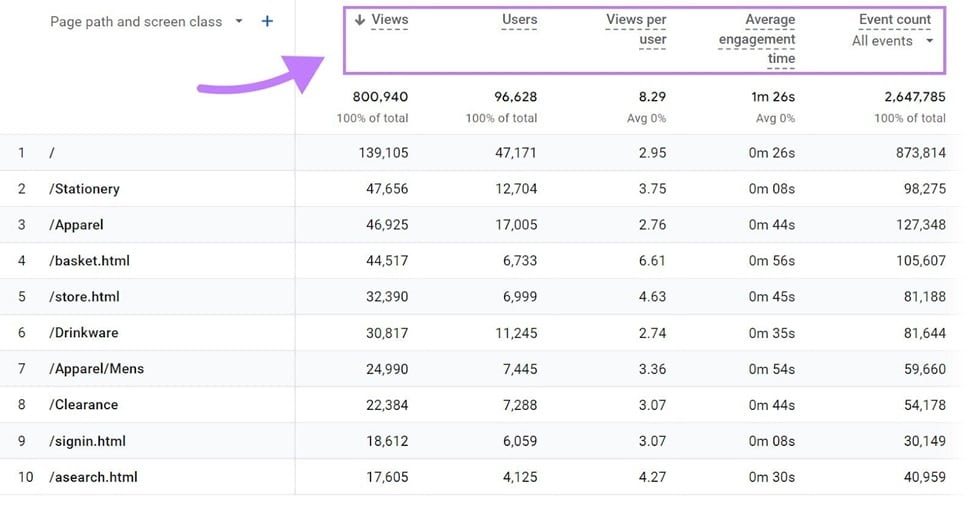Understanding the impact of your content marketing efforts is crucial in today’s competitive digital world. The effectiveness of your strategies is determined not just by the quality of your content but also by the metrics you monitor. To ensure your content reaches its intended audience and achieves its goals, you need to track its performance meticulously.
In this comprehensive guide, we will explore 14 essential metrics that every content marketer should be familiar with. These indicators will provide insights into the success and areas of improvement for your content strategies.
Understanding the Essence of Content Marketing Metrics
Content marketing indicators encompass both quantitative (numeric) and qualitative (descriptive) data that allow you to assess the success and efficiency of your content marketing approach.
These indicators cover aspects like organic search visits, page views, sources of traffic, click-through rates (CTR), and shares on social platforms, among others.Here’s a glimpse into some indicators available in Google Analytics 4 (GA4):

Google Analytics 4 overview Each metric tells a unique story. Therefore, it’s essential to select the right indicators based on the content type, distribution channel, and your objectives.
For instance, return on investment (ROI) evaluates the contribution of your content marketing activities to your company’s bottom line.
Metrics such as feedback on your social media content can offer insights into the level of engagement of your followers.
By examining these metrics, you can:
- Assess the performance of your current content
- Determine which content forms are most appealing to your desired audience
- Check if your content marketing initiatives align with your primary business objectives This data can guide you in refining your content marketing plan, ensuring improved results and validating your marketing investments.
Let’s delve deeper into some particular indicators.
Metrics for Evaluating Online Presence
This set of metrics provides insights into the effectiveness of your content in terms of organic search performance, reach on social platforms and ads, and the volume of visitors to your site:
Visibility Metrics: The Frontline Indicators
- Organic Search Traffic
This metric reflects the number of visitors who land on your website through unpaid search results. A consistent increase in organic traffic indicates that your content is ranking well on search engines and is deemed valuable by users.
Tools like Google Search Console can provide detailed insights into your content’s performance in this area.
- Views
This encompasses the total number of visits your content receives from all sources, be it organic search, social media, or direct visits. Monitoring views can help identify which content formats are most popular among your audience.
- Keyword Rankings
This metric reveals the positions your content holds for specific search queries on search engines. A high keyword ranking means your content is considered authoritative and relevant for that particular topic.
- Backlinks
These are external links from other websites pointing to your content. High-quality backlinks from reputable sources can significantly boost your content’s credibility and search engine ranking.
- Impressions
It denotes the number of times your content, such as an ad or social media post, is displayed to users. High impressions indicate that your content has a broad reach.
Audience Insight Metrics: Know Your Visitors
6. Traffic Sources
This metric breaks down the origins of your traffic. Whether they come from organic search, direct links, social media, or referrals, understanding where your audience is coming from can help tailor your content strategy.
7. Brand Mentions
Monitoring when and where your brand is mentioned online can offer insights into your brand’s perception and reputation. Positive mentions can boost brand trust, while negative mentions can provide opportunities for improvement.
Conversion & Sales Metrics: Measuring ROI
8. Conversion Rate
This is a crucial metric that indicates the percentage of visitors who take a desired action, such as signing up for a newsletter or making a purchase. A high conversion rate signifies that your content is persuasive and aligns with your audience’s interests.
9. Content Marketing ROI
This metric evaluates the profitability of your content marketing efforts. By comparing the revenue generated from content marketing to the expenses incurred, businesses can assess the financial viability of their strategies.
Engagement & Interest Metrics: Gauging Resonance
10. Follower/Subscriber Growth
A steady increase in followers or subscribers on social media platforms indicates that your content is engaging and attracts a wider audience.
- Average Engagement Time
This metric reveals the average duration visitors spend on your content. A longer engagement time suggests that your content is compelling and holds the audience’s attention.
- Average Engagement Rate
On social media, this metric measures the percentage of interactions relative to the number of followers. On websites, it gauges the percentage of engaged sessions.
- Click-Through Rate (CTR)
CTR evaluates the effectiveness of call-to-actions within your content. A high CTR indicates that your content’s messaging is clear and persuasive.
- Interaction on Social Platforms
Monitor interactions on social media (such as likes, comments, shares) to gauge the level of audience engagement with your posts. You can assess these metrics for specific posts or review the overall engagement across a set duration.
By analyzing these engagement figures over various intervals, you can discern which content themes or styles captivate your audience the most. For tracking these interactions, you can utilize the native tools provided by each social platform.
In Conclusion
Content marketing metrics are not just numbers; they’re insights that can shape the future of your marketing strategies. By understanding and analyzing these metrics, businesses can refine their content, cater to their audience’s preferences, and achieve their marketing objectives. In the ever-evolving landscape of digital marketing, staying informed and adaptable is the key to success.





















